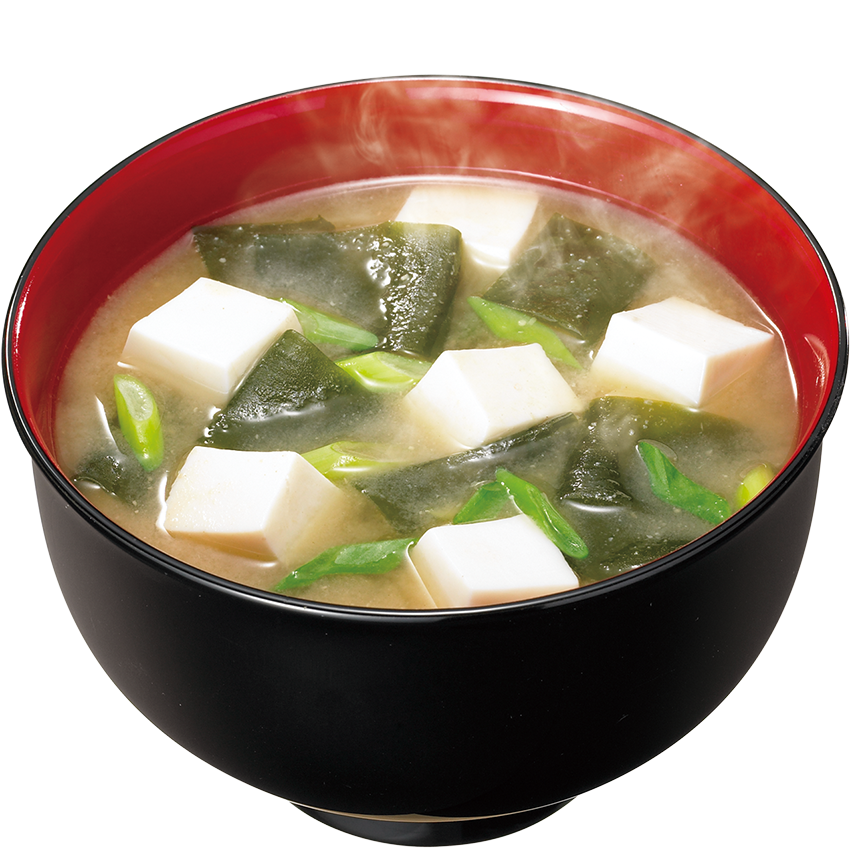What is Miso?




Types of Miso
Miso can be largely categorized into four types: rice miso, barley miso, soybean miso, and blended miso.
Approximately 80% of miso currently produced in Japan is rice miso.

Rice Miso
Made with rice, soybeans, and salt.
White miso is also a type of rice miso.

Barley Miso
Made of barley, soybeans, and salt.
Main producers are located in the Chugoku, Shikoku, and Kyushu regions.

Soybean Miso
Made of soybeans and salt.
Main producers are located in the Chukyo region.

Blended Miso
Made by blending two or three types of rice miso, barley miso, or soybean miso.
Blended miso can also be miso made from a combination of rice koji, barley koji, or soybean koji.
Miso other than rice miso, barley miso, and soybean miso is also categorized as blended miso.

Classification of Miso



About the taste of Miso
Miso flavor is created in a complex combination of sweetness, saltiness, umami, sourness, bitterness, and astringency. To create a delicious bowl of miso soup, the components of the flavor must be in harmony with each other, in quality and quantity.
Sweetness, umami, and saltiness are explained below.

Sweetness of Miso
Starch in the rice is broken down by amylase in the koji. A higher rice koji content will result in a sweeter miso.
When miso is allowed to age for a long time, the sugar content is consumed by the yeast and lactic acid bacterium. If the sugar content is dramatically reduced, it creates a so-called "dry" state.
Aging and Umami
Umami of miso is influenced by amino acids (mainly glutamic acid) formed when the soybean protein breaks down. The umami increases with aging. Umami is not formed solely by glutamic acid, but formed when saltiness, sourness, and sweetness are blended together, and a good aroma and moderate viscosity are added.
As aging progresses and the soybean continues to break down, the stimulation felt on the tongue softens, and the miso develops a broader and richer taste.
Saltiness of Miso
Miso that is extremely salty in the early stages of preparation loses some of its saltiness as it matures.
This phenomenon, in which the saltiness perceived by the tongue decreases even through the salt concentration does not change, is called "shio-nare", and is the result of the sour and umami components. Lactate, peptides, and amino acids are all substances that cause "shio-nare".
Additive-free Miso
Additive-free miso is prepared without adding alcohol to the kuradashi miso (miso removed from the aging tank). It is directly filled into the container.
The container may expand during the distribution process, since the yeast activity continues and promotes fermentation.
Additive-free Miso
Additive-free miso is prepared without adding alcohol to the kuradashi miso (miso removed from the aging tank). It is directly filled into the container.
The container may expand during the distribution process, since the yeast activity continues and promotes fermentation.
Correct preservation method of Miso
Miso changes color over time and according to the temperature. This phenomenon occurs when the raw ingredients are broken down by the koji and is due to the reaction between sugar from the rice, and protein and amino acids from the soybeans. This also causes the flavor to change. This phenomenon is the result of the ingredients in the miso reacting with each other, and can occur even in an unopened pack of miso.
When you store miso in a hot place, the color gets darker, and when it gets too dark,
it’s a sign that flavor may have been lost.

Point 1
To preserve the delicious flavor of miso, please store it in the refrigerator or freezer.*
* Miso does not freeze even when stored in the freezer.
* It may become slightly stiff, but can be used directly from the freezer.
Point 2
Once a miso pack has been opened, it should be tightly wrapped with plastic wrap to prevent contact with air which may cause drying and oxidation.



